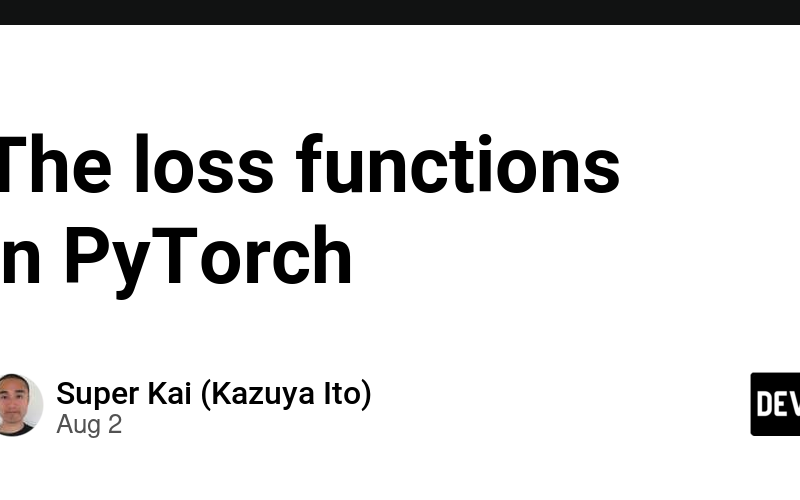*My post explains optimizers in PyTorch.
A loss function is the function which can get the mean(average) of the sum of the losses(differences) between a model’s predictions and true values(train or test data) to optimize a model during training or to evaluate how good a model is during testing. *Loss function is also called Cost Function or Error Function.
There are popular loss functions as shown below:
(1) L1 Loss:
- can compute the mean(average) of the sum of the absolute losses(differences) between a model’s predictions and true values(train and test data).
- ‘s formula:
- is used for a regression model.
- is also called Mean Absolute Error(MAE).
- is L1Loss() in PyTorch.
-
‘s pros:
- It’s less sensitive to outliers and anomalies.
- The losses can be easily compared because they are just made absolute so the range of them is not big.
-
‘s cons:
(2) L2 Loss:
- can compute the mean(average) of the sum of the squared losses(differences) between a model’s predictions and true values(train and test data).
- ‘s formula:

- is used for a regression model.
- is also called Mean Squared Error(MSE).
- is MSELoss() in PyTorch
- ‘s pros:
- All squared losses can be differentiable.
- ‘s cons:
- It’s sensitive to outliers and anomalies.
- The losses cannot be easily compared because they are squared so the range of them is big.
(3) Huber Loss:
- can do the similar computation of either L1 Loss or L2 Loss depending on the absolute losses(differences) between a model’s predictions and true values(train and test data) compared with
deltawhich you set.
*Memos:-
deltais 1.0 basically. - Be careful, the computation is not exactly same as L1 Loss or L2 Loss according to the formulas below.
-
- ‘s formula. *The 1st one is L2 Loss-like one and the 2nd one is L1 Loss-like one:

- is used for a regression model.
- is HuberLoss() in PyTorch.
- with
deltaof 1.0 is same as Smooth L1 Loss which is SmoothL1Loss() in PyTorch. - ‘s pros:
- It’s less sensitive to outliers and anomalies.
- All losses can be differentiable.
- The losses can be more easily compared than L2 Loss because only small losses are squared so the range of them is smaller than L2 Loss.
- ‘s cons:
- The computation is more than L1 Loss and L2 Loss because the formula is more complex than them.
(4) BCE(Binary Cross Entropy) Loss:
- can compute the mean(average) of the sum of the losses(differences) between a model’s binary predictions and true binary values(train and test data).
- s’ formula:

- is used for Binary Classification. *Binary Classification is the technology to classify data into two classes.
- is also called Binary Cross Entropy or Log(Logarithmic) Loss.
- is BCELoss() in PyTorch.
*Memos:
(5) Cross Entropy Loss:
- can compute the mean(average) of the sum of the losses(differences) between a model’s predictions and true values(train and test data). *A loss is between 0 and 1.
- s’ formula:

- is used for Multiclass Classification and Computer Vision.
*Memos:- Multiclass Classification is the technology to classify data into multiple classes.
- Computer vision is the technology which enables a computer to understand objects.
- is CrossEntropyLoss() in PyTorch.
Source link
lol

